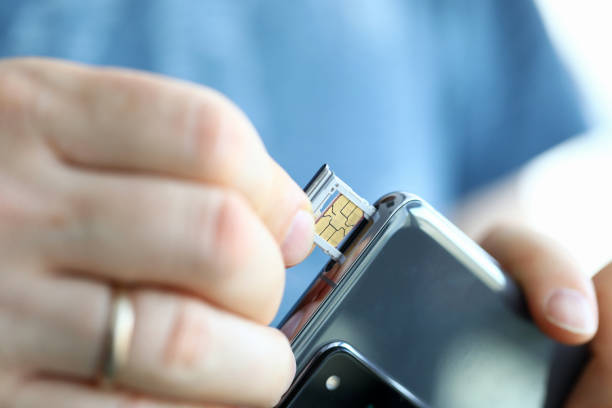Losing access to a paperclip at the exact moment you need to eject your iPhone’s SIM card can be frustrating. Fortunately, there are other means to safely remove your SIM card without resorting to the traditional paperclip. iPhones, being widely used, incorporate a slim tray that houses the SIM card, allowing it to connect to mobile networks. This compartment is typically accessed using an ejecting tool, which fits into a small hole beside the tray. But what do you do when you have no ejecting tool at hand? The main topic of this article is to address this common conundrum and guide you through alternative methods for ejecting your iPhone’s SIM card sans paperclip.
Understanding Your iPhone’s SIM Card Tray
Before we delve into the list of alternatives, it’s crucial to know your battlefield—that is, the iPhone’s SIM card tray. The tray is an integral component of your iPhone that holds your SIM card securely in place. The design of card slots and card trays has evolved across iphone models, with newer phone iterations featuring a more seamless integration into the phone’s frame. Despite this evolution, the fundamental mechanism for SIM card removal has remained consistent: gently inserting a tool into the eject hole to make the tray pop open.
Identifying the SIM Card Tray on Different iPhone Models
Several iPhone models have the SIM card tray located on the right side of the phone, but it’s not the case for all models. For instance, earlier iPhone models feature the tray in different areas, and if you switch from an old to a newer phone, identifying the new tray location might be slightly confusing. Keep in mind that newer models also showcase a smaller hole for the eject tool, a design choice likely made to maintain the sleek aesthetics of the phone. However, it does not impede the card removal process as long as the appropriate removal tools are used.
Types of SIM Cards and Their Uses
SIM cards come in various sizes, including standard, micro, and nano, with the latter being the type utilized in most modern iPhones. The SIM card facilitates your phone’s ability to connect to your mobile carrier’s network, storing important information such as your contacts and personal data. Changing or replacing SIM cards might need to be done when switching carriers, traveling abroad, or when upgrading to a newer phone that requires a different size SIM card.

Tools You Can Use Instead of a Paperclip
What do you do when a dedicated iPhone SIM card ejector tool is not within reach? You turn to common household items that are inconspicuously hiding in your drawers, ready to assist you.
Common Household Items as Alternatives
- Earring or Stud: An earring with a straight post can be effective for ejecting a SIM card tray.
- Staple: In any office setup, staples are commonly found and can be unfolded to a straight line to serve the purpose.
Besides these, other items such as sewing needles, mechanical pencil tips, or a fine-point pen may also come to your rescue. Each of these makeshift ejector tools must be used with caution to avoid damaging the sensitive SIM card slot or the tray itself.
How to Safely Use Alternative Tools Without Damaging Your iPhone
Implementing alternative tools for SIM card ejection isn’t without its risks. In the table below, we outline safety precautions that could also ensure you do not come close to damaging your iPhone or its SIM card tray.
| Tool | Precaution | Reason |
|---|---|---|
| Earring or Stud | Ensure the post is straight and fits into the eject hole | To prevent bending the post |
| Staple | Unfold carefully and use only one of the pointed ends | To maintain a small size |
| Toothpick | Gently inserting without force, be aware of the material’s fragility | To prevent breakage inside the slot |
Keep in mind that pressure and alignment are key factors. For instance, while ejecting, apply steady, vertical pressure so the tray pops open smoothly. If the tray does not budge or seems stuck, do not force it as this could damage the mechanism or the tray itself.
Step-By-Step Guide to Removing Your iPhone’s SIM Card Without a Paperclip
Having discussed the possible alternatives and safety measures, it’s now time to provide a detailed guide to getting that SIM card out of there. First, ensure your iPhone is powered off. You don’t want to be swapping SIM cards while your device is still on, as this could lead to software issues or data loss.
Preparing Your iPhone for SIM Card Removal
- Power off the iPhone to prevent any potential data corruption.
- Locate the SIM card tray on your iPhone model.
- Choose your alternative tool from the ones listed above.
Instructions for Using Each Alternative Tool
Earring or Stud
- Find an unused earring with a straight post.
- Gently insert the post into the eject hole of the SIM tray.
- Apply a vertical, steady pressure until the tray pops open.
- Carefully pull the tray out of the iPhone.
Staple
- Choose a single staple and unfold one end to create a straight pin.
- Align the straight end with the eject hole.
- Press gently yet firmly until the tray releases.
- Slide the tray out to access your SIM card.
Toothpick
Using a toothpick can be a little tricky given its larger size and the possibility of snapping.
- Carefully insert the pointed end of a toothpick into the eject hole.
- Twist the toothpick gently until you feel the tray give way.
- Once the tray is loose, use your fingers to fully extract it.
This concludes the first half of the article. The remaining sections will explore additional methods for removing your SIM card and troubleshooting common issues such as a stuck SIM card tray.

Troubleshooting Common SIM Card Removal Issues
Encountering problems during the SIM card removal process is not uncommon. The card tray might not eject as expected, or in worst-case scenarios, you end up with a damaged tray or SIM card. It’s essential to approach these issues with calm and careful consideration to prevent further damage to your iPhone.
What to Do If the SIM Tray is Stuck
- Double-check to make sure you are using the correct amount of pressure and that the tool is being inserted straight into the eject hole.
- Try a different tool from the list provided if you are unable to get a good grip or if the tool seems to be too big for the hole.
If you’ve done so and the tray still will not budge:
- Do not force it or wiggle the tool excessively as this might cause damage to the SIM tray or the internal locking mechanism.
- Consider visiting an Apple store or an authorized service provider to have the professionals take a look.
- It could also be due to dirt or debris inside the tray slot, so gently cleaning around the area might help.
How to Handle a Damaged SIM Tray
If you’re already facing a situation with a damaged SIM tray, here are a few steps to consider:
- If possible, carefully remove any visible debris using a soft, lint-free cloth.
- Assess the level of damage—if minor, it might still be possible to carefully insert and eject the SIM card with a proper tool.
For significant damage:
- Avoid attempting further removals or repairs on your own as this could void warranties or lead to worse damage.
- Seek professional assistance to replace or repair the SIM card tray.
- In the meantime, if you need cellular service, consider enabling Wi-Fi calling or using messaging apps over a Wi-Fi network until the physical SIM can be accessed or replaced.
Remember, a damaged SIM tray is a sensitive issue that might need parts replacement, which is best done by certified technicians to ensure the integrity of your iPhone is maintained.

Conclusion
Successfully removing a SIM card from an iPhone without a paperclip is entirely feasible when you have the right tools and knowledge at your disposal. We have explored a variety of household items that can serve as makeshift ejector tools and provided a comprehensive guide on how to use them safely. Remember to approach this task with patience and precision to avoid any potential damage to your iPhone. Whether you’re switching carriers, traveling, or simply transferring to a newer phone, mastering the art of SIM card removal will ensure you’re always connected, no matter the circumstances.
FAQs
Q1: Can I use a toothpick to remove my iPhone SIM card if other tools are not available?
A1: Yes, you can use a toothpick, but it requires extra caution. Toothpicks are generally thicker and not as sturdy as metal tools, so there’s a risk of them breaking inside the eject hole. If you must use a toothpick, make sure to gently insert it and apply very light pressure.
Q2: What should I do if I’ve attempted to remove the SIM card tray and it is now stuck?
A2: If the SIM card tray is stuck, it’s important not to force it. Double-check that you’re using a suitable tool and applying pressure correctly. If this does not work, clean around the tray and slot with a soft cloth, and if it’s still stuck, seek professional assistance.
Q3: What could happen if I try to remove the SIM card tray with excessive force?
A3: Using excessive force can damage the SIM card tray or the internal locking mechanism of your iPhone. This could lead to the need for costly repairs or replacement parts, and it may void any warranties on your device.
Q4: Is there any risk in changing SIM cards while my iPhone is powered on?
A4: Yes, changing SIM cards while your iPhone is powered on may corrupt data and could cause software glitches or loss of connectivity settings. Always power off your iPhone before attempting to remove or insert a SIM card.
Q5: If I accidentally damage my SIM card tray, is using a professional repair service my only option?
A5: If the damage is minor and you feel confident in your ability to handle sensitive phone parts, you might consider purchasing a SIM card tray replacement kit and doing it yourself. However, for most users, especially those without technical expertise, using a professional repair service is the safer and more reliable option.


